Reviews
Bienal De São Paulo Explores Themes of Chaos and Uncertainty
The expansive, ambitious 32nd edition features 340 works by over 80 artists.
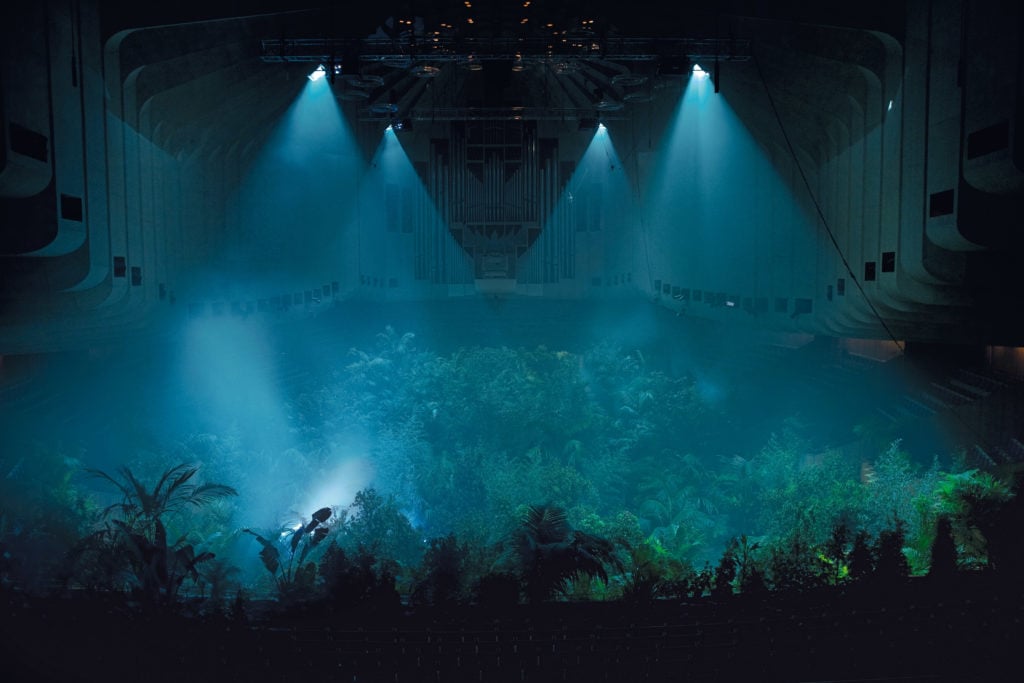
The expansive, ambitious 32nd edition features 340 works by over 80 artists.

At a packed press conference at the Bienal de São Paulo on September 6, Jochen Volz, the head of programs at Serpentine Galleries in London, and his co-curators, Gabi Ngcobo (South Africa), Julia Rebouças (Brazil), Lars Bang Larsen (Denmark), and Sofia Olascoaga (Mexico) revealed the decision behind the chosen theme of this year’s edition, “Incerteza Viva,” or “Live uncertainty.”
“Uncertainty is over-reflected in current conditions,” said Volz at the press conference. “Contemporary art offers ways to address that. I want to be able to objectively address important issues of our time, including political and economic instability. It’s necessary for us to sever the link between uncertainty and fear.” Volz expanded on the theme in a written statement, noting that the role of the biennial is “to act as a platform which actively promotes diversity, freedom, and experimentation, at the same time exercising critical thought and proposing other real possibilities.”
Amid ongoing protests against the impeachment of Brazilian president Dilma Rouseff, the press conference was briefly interrupted by a group (which included a number of artists appearing in the biennial) wearing black shirts with white letters stating in Portuguese “I want to vote” and “Out Temer!” The group began chanting their opposition to the recent leadership changes, which made the biennial’s theme even more apparent.
The expansive, ambitious 32nd edition features 340 works by over 80 artists and collectives spread over three floors; in the weeks ahead, visitors can expect site-specific works and related performances throughout the city. It opens to the public September 7 and runs through December 11 at the famous Oscar Niemayer-designed pavilion in the city’s sprawling Ibirapuera Park.
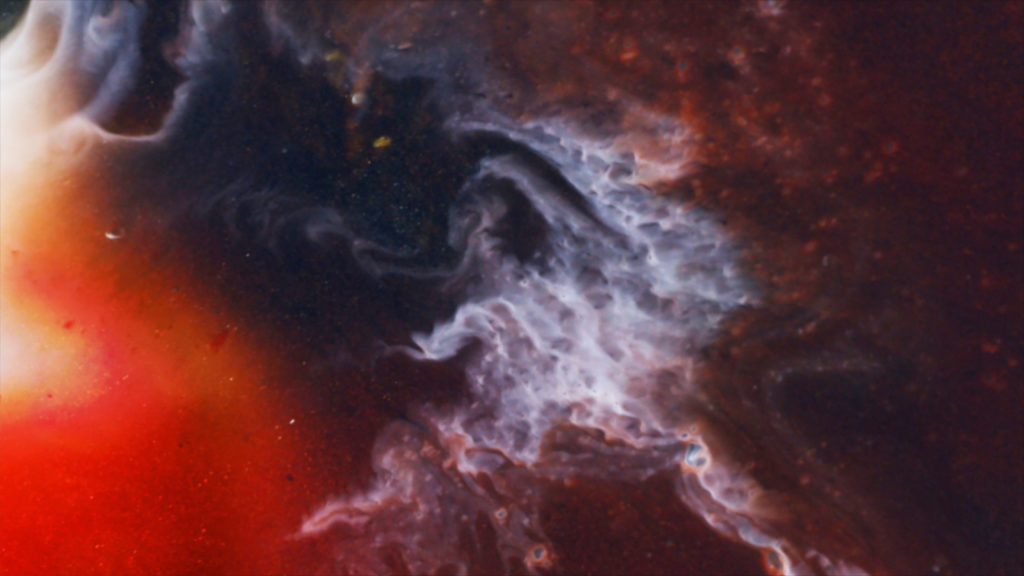
Rachel Rose, Everything and More (2015). Courtesy of Gavin Brown’s Enterprise and Pilar Corrias Gallery.
A healthy dose of Brazilian and Latin American artists—some of whose names may be new to US and European audiences—are on view, as well as a considerable roster of notable names, including Jeremy Deller, Lyle Ashton Harris, Pierre Huyghe, Eduardo Navarro, Ebony G. Patterson, Pope. L, Rachel Rose, and Erika Verzutti.
The latest edition of the biennial is also heavy on large, immersive video installations—from the likes of Rose, Ashton Harris and Hito Steyrel, and that’s not a bad thing. Artists, many of whom were commissioned, or showing their works for the first time here, eagerly took up the mantle of exploring themes of chaos and uncertainty.
For instance, Patterson’s massive installation on the second floor of the pavilion features a series of works exploring the high murder rates of black children and teens in countries including Jamaica (where she was born), Brazil, and the US.
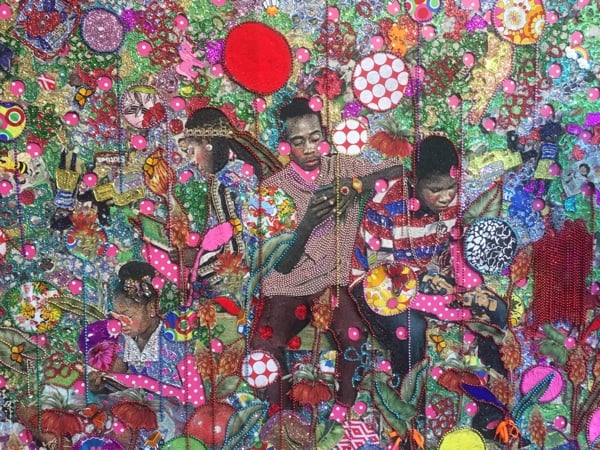
Ebony G. Patterson, …they were discovering things and finding ways to understand… (…when they grow up…) (2016). Courtesy of the artist and Monique Meloche Gallery, Chicago.
Several works, including …they were filled with hope, desire, and beauty…(when they grow up…) (2016) feature large images placed front and center against a riotous background of mixed media—strings of beads, appliques, broaches, plastic, glitter, fabric and toys. Some items are set on the floor, while others against a hot-fuschia wall with white polka dots.
One such work features a bright-orange toy car at the center, which references a horrific recent incident in Brazil where five young black men from a favela, or slum, in Rio were abruptly gunned down en route to a Friday night celebration. Noting other recent notorious murder cases, such as that of Tamir Rice and Trayvon Martin, Patterson told artnet News the works are intended to explore the notion of “not being allowed to enjoy the innocence of youth.”

Eduardo Navarro, excerpt from Sound Mirror (2016). Courtesy of the artist.
Meanwhile, Argentine-born artist Eduardo Navarro’s site-specific installation, Sound Mirror (2016), connects a palm tree to the exhibition space. “The plant and the visitors are placed in equivalent positions in a sonorous exchange that challenges the meanings of communication and listening,” according to a statement.
(Stay tuned for artnet News’ talk with the artist about his inspiration for this and other projects, including We Who Spin Around You on New York’s High Line park this past summer.)
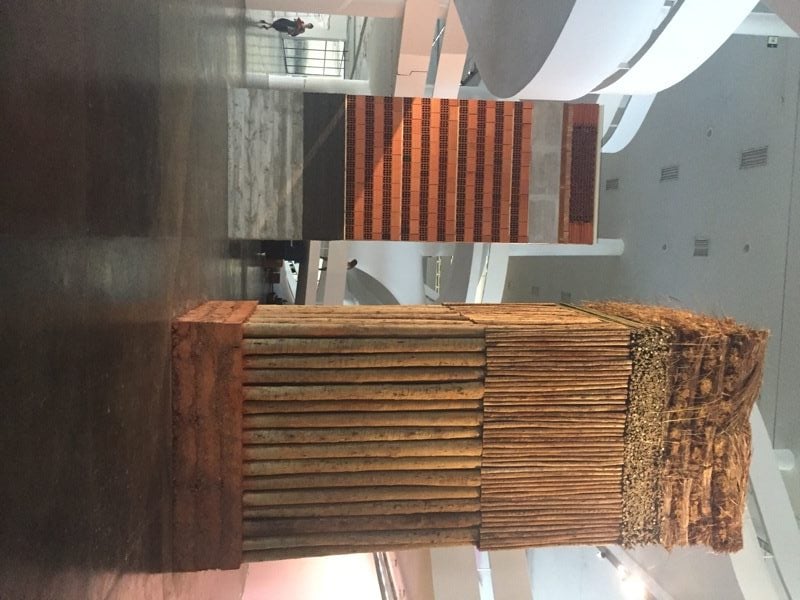
Lais Myrrha, Double Standard (2016). Photo by Eileen Kinsella
One of the more commanding works in this biennial is Brazilian artist Lais Myrrha’s imposing Double Standard, which is visible from multiple pavilion levels, and is comprised of two towers standing at the same height. One is composed of materials found in indigenous constructions (vines, logs, and straw), the other with typical industrial construction materials (bricks, cement, steel, glass, pipes), methods that “embody ways of life and two different projects of society that, even if they are possibilities for construction, already declare their forms of ruin,” according to biennial literature.
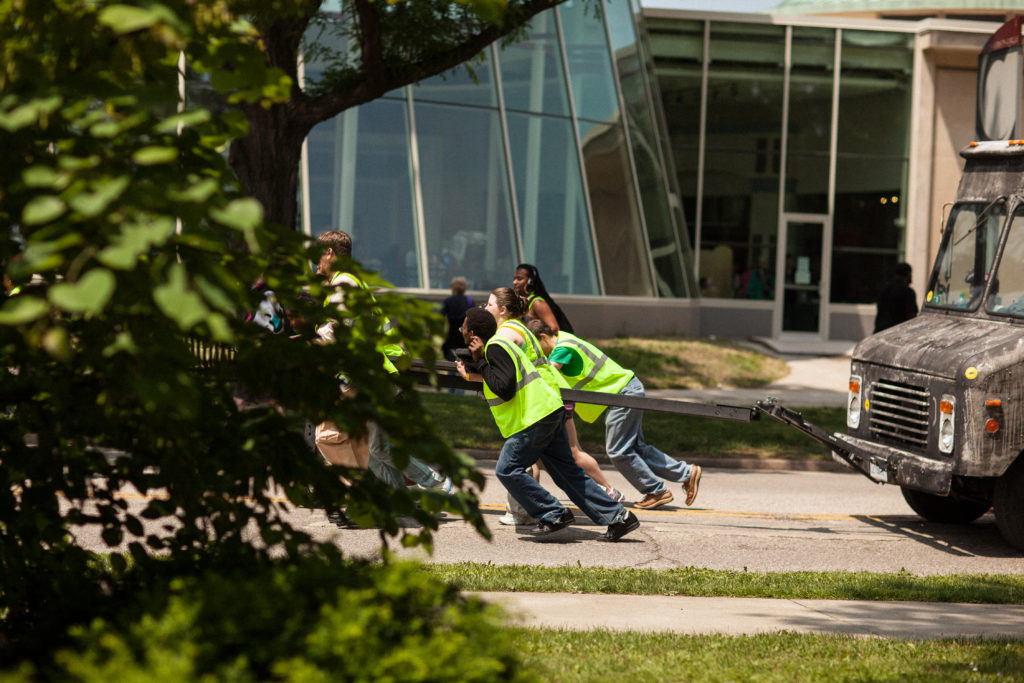
Pope.L. Pull! (2013). Courtesy of the artist. Photo by Pope.L
Artist Pope. L has a much-buzzed about performance for the biennial slated for September 7. Baile is described by the artist as “a physical vocabulary developing in response to the city and the manifestations (or protests) that occur. It’s the idea that no matter how desperate the politics, the party will go on.”
Pope. L says that the “hybrid of this feeling and the visuality of a city that seems to be partying and falling apart at the same time is a dark but happy spectacle that is always tied to the plaza, to the street.”
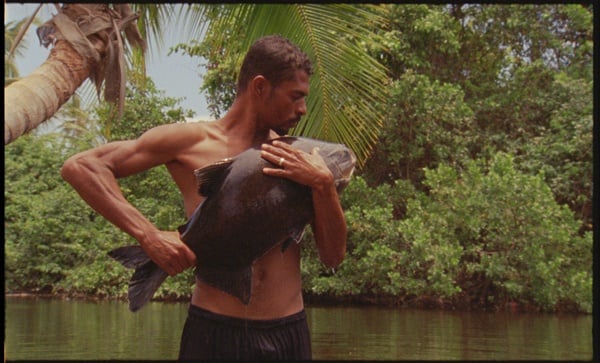
A still from O peixe by Jonathas de Andrade at the Bienal de São Paulo. Courtesy of the artist.
Another work worth noting is Brazilian artist Jonathas de Andrade’s compelling video, O peixe, in which fishermen in the northeast region of Brazil utilize traditional techniques like nets and harpoons to capture their prey but then act out a ritual in which they hold the fish in their arms—petting and soothing them—in unexpectedly tender moment, until the fish breathes its last breath.
De Andrade, who is from the coastal town of Recife, explained to artnet News that the ritual is fictional, but the fisherman are real. The dramatic and emotional display of soothing the fish they have just speared is a comment on the way they, too, are often treated as disposable.
A contact who invited me to a meeting at the pavilion today described it as “the film on the ground floor with the fish being cuddled…I have been told that it is memorable.”
So is this biennial as a whole.